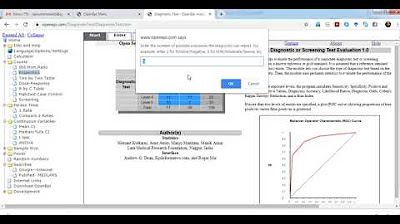Use wget to download / scrape a full website
Summary
TLDRThis video tutorial introduces the use of 'wget', a simple tool for downloading and scraping websites. It demonstrates basic usage, advanced functionalities, and common parameters for web scraping or file downloading. The video provides step-by-step examples, including downloading an entire website's content for offline access, with parameters to handle recursion, resource downloading, and domain restrictions. It also covers best practices for large-scale scraping, such as wait times and rate limiting, to avoid IP blacklisting and ensure efficient data retrieval.
Takeaways
- 😀 The video introduces the use of Wget as a simple tool for downloading and scraping websites.
- 🔍 The script outlines three examples of using Wget, starting with a basic example and moving to more advanced functionalities.
- 📚 It is clarified that 'scraping' in this context may not involve in-depth data extraction but more about downloading web pages for offline use.
- 🌐 The video mentions other tools like Scrapy for more advanced scraping capabilities, which have been covered in other videos.
- 📁 The first example demonstrates downloading a simple HTML file using Wget, which can be opened in a browser but lacks other resources.
- 🔄 The second example introduces parameters like recursive navigation, no-clobber, page requisite, convert links, and domain restrictions to download associated resources.
- 🚀 The third example includes advanced parameters for handling larger sites, such as wait times between requests, rate limiting, user-agent specification, recursion levels, and logging progress.
- 🛠 The script emphasizes the need to adjust parameters based on the specific requirements of the site being scraped.
- 🔒 It highlights the importance of respecting website policies and being a considerate 'netizen' when scraping to avoid IP blacklisting.
- 📝 The video concludes with a note on the utility of Wget for quick scraping tasks and post-processing of content offline.
Q & A
What is the main purpose of the video?
-The main purpose of the video is to demonstrate how to use Wget as a simple tool to download and scrape an entire website.
What are the three examples outlined in the video?
-The video outlines three examples: 1) A basic example similar to a 'hello world', 2) Advanced functionality with common parameters used for screen scraping or downloading files, and 3) More advanced parameters for more complex scenarios.
What does the term 'download and scrape' imply in the context of the video?
-In the context of the video, 'download and scrape' implies downloading the webpage content and extracting structured content from the web pages, although the video emphasizes that it is a simple example and not an in-depth scraping capability.
What are some limitations of using Wget for scraping?
-Some limitations of using Wget for scraping include that it might not extract all content such as CSS files, images, and other resources by default, and it is not as versatile as full-fledged web scraping tools.
What is the significance of the 'no-clobber' parameter in Wget?
-The 'no-clobber' parameter in Wget ensures that if a page has already been crawled and a file has been created, it won't crawl and recreate that page, which is helpful for avoiding duplication and managing connectivity issues.
How does the 'page-requisites' parameter in Wget affect the download process?
-The 'page-requisites' parameter in Wget ensures that all resources associated with a page, such as images and CSS files, are also downloaded, making the content more complete for offline use.
What is the purpose of the 'convert-links' parameter in Wget?
-The 'convert-links' parameter in Wget is used to convert the links in the downloaded pages to point to local file paths instead of pointing back to the server, making the content accessible for offline browsing.
Why is the 'no-parent' parameter used in Wget?
-The 'no-parent' parameter in Wget is used to restrict the download process to the specified hierarchy level, ensuring that it does not traverse up to higher levels such as parent directories or different language versions of the site.
What are some advanced parameters discussed in the video for handling larger websites?
-Some advanced parameters discussed for handling larger websites include 'wait' to introduce a delay between requests, 'limit-rate' to control the download speed, 'user-agent' to mimic a browser, 'recursive' to control the depth of recursion, and redirecting output to a log file.
How can Wget be used to monitor website changes?
-Wget can be used to download webpages and keep the content offline, which can then be used for comparison over time to monitor if websites have changed, although the video does not detail specific methods for this monitoring.
Outlines

This section is available to paid users only. Please upgrade to access this part.
Upgrade NowMindmap

This section is available to paid users only. Please upgrade to access this part.
Upgrade NowKeywords

This section is available to paid users only. Please upgrade to access this part.
Upgrade NowHighlights

This section is available to paid users only. Please upgrade to access this part.
Upgrade NowTranscripts

This section is available to paid users only. Please upgrade to access this part.
Upgrade Now5.0 / 5 (0 votes)





